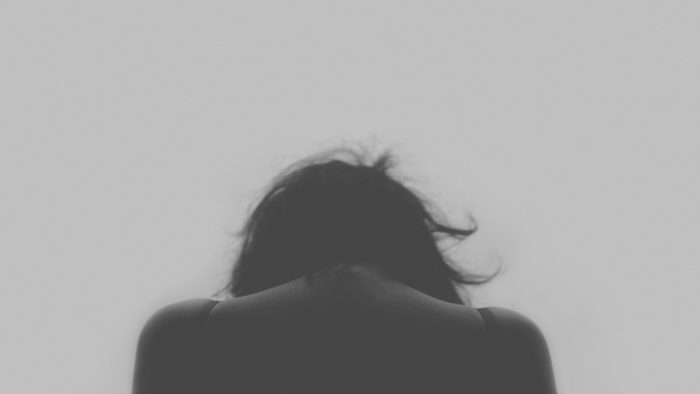{*Did you know you can write on Elephant? Here’s how—big changes: How to Write & Make Money or at least Be of Benefit on Elephant. ~ Waylon}
~
“The pain passes, but the beauty remains.” ~ Pierre Auguste Renoir
“And when great souls die, after a period peace blooms, slowly and always irregularly. Spaces fill with a kind of soothing electric vibration. Our senses, restored, never to be the same, whisper to us. They existed. We can be. Be and be better. For they existed.” ~ Maya Angelou
~
As someone who works extensively with grief and loss and end of life care, I’ve had the opportunity to hear many perspectives, beliefs, and opinions on these most human and yet somehow most mysterious of processes.
As the “Death Doula,” “Death Cafe,” and “Death Matters” movements are growing, we see more and more articles and interviews about grief and death in the popular press. At the same time, one of the most constant refrains is how little we talk about death, what a small subculture it seems to be—even though it affects every single person—how it’s hard or uncomfortable to talk about, how it’s not polite, not “table talk.”
And yet, it is largely due to this fact—that we don’t talk openly about this (eventually) shared experience—that so many of us feel absolutely incapacitated in the face of someone else’s suffering around death and loss. Sometimes we don’t even reach out to respond because we feel like we just don’t know what to say, so we say nothing.
As a facilitator of Death Cafes, and nearly daily conversations about death, I have also become aware of the flip side of not knowing what to say, of saying nothing, which is stating some “truism” with such authority that in the absence of any conflicting information, the rest of the group agrees—even adding their own ideas or observations, their own thought terminating clichés—without the depth of knowledge, experience, or cultural competency to really know.
One of these that I hear nearly every time is something along the lines of, “As Americans we are in total denial about all of this, but in other cultures (and here it is always inserted Mexico, Bali, or India), there is not the same fear of death; they even celebrate it, so their experience is so much easier.” Read that again, because I have literally heard that statement, or some close variation, dozens of times.
I have always pushed back against this narrative because I know that human experience is human experience, and things like grief are as universal as breathing. I also know from decades of teaching yoga that there is an American tendency to fetishize and idealize other cultures and traditions—of which we typically know little (including yoga itself) while degrading or denying our own culture.
This is really why I got into interfaith teaching in the first place. I wanted to help myself and my students to really see what we don’t know, what we have consumed superficially and claimed deep knowledge of, to find resources to expand or confirm or even correct what we think we know, and to find the many gems in our own culture and traditions.
This came up again for me so strongly last weekend after the death of a child here in my community in Mexico, a child who I considered as close as my own, one I have known his entire life and who counted me as his “segunda mama.”
I have been around a lot of death and death rituals here in Mexico, including of course the Day of the Dead, but I had never been in the inner inner circle of pain and grief and the planning and carrying out of all of the events and rituals surrounding a death, and specifically the death of a child.
I stayed up for 48 hours with the family keeping vigil over the body, while people from the community came and went at all hours of the day and night to view the body, to sit in silence, to cry, to wail, to help, to console. I walked with the family, behind the casket, to the baseball field where we cheered the casket as it was run around the bases, giving our little friend his last “home run.” I walked with the family to the mass, and then to the beach where we brought the casket, to see the ocean one last time, and I walked with the family to the cemetery, sang and cried and prayed as the body was lowered into the ground. I spent every evening with the family during the “novena”—the nine days of prayers in front of the house following the burial. Tonight will be the final mass to close this period of grieving.
There is a lot of wisdom in all of that. I always tell my clients that they need to simply pass time in the beginning, to get more time between the death itself and the next day, and the next and the next. This extended ritual allows for just that. The 48 hours of round the clock vigil and the novena give “easy” and appropriate times to visit the family, to share condolences. Easy enough even, that you could simply show up, be seen, and leave without having to say anything. It gives time for people to see the body—which we know through research can be really important—and to spend some quiet time in communion with the deceased.
However, in my experience, there is a tendency to conflate those rituals with somehow easing of the experience of grief. We see what we want to see; we believe that because these rituals are in place, whether it is parading a body through the streets, or burning a body publicly, or setting up elaborate altars, that this “culture” has somehow found a way around the fear of death and the profound emptiness that follows for the bereaved. In doing so, we also deny and negate the various rituals that we have in place in our own culture, as if “Americans” (already a problematic assumption) have no rituals, no traditions, no containers for death and grief.
I think about the yoga perspective on death and dying, about how the kleshas, written thousands of years ago on the other side of the world, includes “abinivesha” or “fear of death” as one of only five causes of suffering. I think about the Bhagavad Gita and how the central theme is fear of death, or the Katha Upanishad—an entire text written well over 2,000 years ago—about death and the meaning of life. These are not new questions, new fears, specific to one culture; these are universal human experiences, human questions, getting to the core of what it means to be alive. Grief is an unescapable part of that.
In watching my Mexican family over this past week, I see all the ritual, but I also see total devastation; I hear the question over and over, “How will we go on?” And I promise you, when the Day of the Dead comes around in November, the same month as what would have been Johnny’s 16th birthday, it will not be some joyous celebration, an opportunity to paint faces, and dance around. It will be a fresh experience of what it means to acknowledge that this person we love is gone, and will never be back, that a future is lost, and that the hole in our hearts is nowhere near repaired.
It also, of course, brought me right back to the other three catastrophic losses that I have experienced over these past five years: the ritual we did for my sister Erin in the forest with all of her Forest School children around, the Irish wake we held for my brother Tim where friends and family met at a bar to yes, drink, but mainly to cry, to console, to share stories and heartbreak, and the beautiful fire ceremony held in the pouring freezing rain for my nephew Shanikai. These were all elaborate rituals, each specific to the person, and only a small part of all of the mourning rituals offered for each of these people.
And, although my family was raised Catholic, and my parents are devout and active in their church, we don’t actually share a specific religious or cultural tradition that would dictate “what to do,” as so many Americans do, whether they are pagan, Jewish, Muslim, Christian, or with various cultural or ethnic roots. It’s wrong to deny the existence of these rituals in our own country, just as it’s wrong to assume that because other countries or cultural rituals are more public that somehow those people suffer less.
Grief, I assure you, is grief.
I have been using the word “ally” lately in my teachings about grief and death. We can learn that acute intense bereavement is a subculture of its own, misunderstood and often lonely. We can open ourselves up to the real felt experience of people in the depths of this kind of loss, without presumptions and projections. When we open ourselves fully to what we don’t know, and allow ourselves to simply be, to bear witness to the profundity of this experience, we can be fully present to what is actually occurring, rather than whitewashing it for our own comfort.
We can, finally, allow the pain of grief, we can face and absorb the real suffering of people in grief, and we can grow, in our allyship, in our compassion, and in our capacity to understand the experience by actually being in it, rather than making it be what we want it to be.
As we do this type of work, this deep allowing, this unknowing, this humility and openness, we can shift the entire culture of discomfort and pretending around grief, and we can learn that by being truly present to death as a fact, and grief too, as an irrefutable fact, that we can offer exactly what the bereaved needs. Little by little, maybe we can learn how to be present, how to talk about death, how to plan for end of life, how to support each other, and ourselves, in this experience that, as much as we would like to deny it, is an experience none of us will escape.
We are all in this together.
~
{Please consider Boosting our authors’ articles in their first week to help them win Elephant’s Ecosystem so they can get paid and write more.}



Read 12 comments and reply